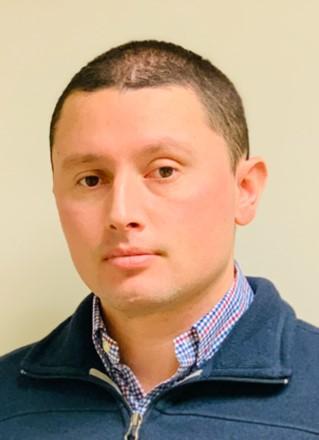Daniel Gallego-Perez, Ph.D.
Edgar C. Hendrickson Chair in Biomedical Engineering
Director of Advanced Nanotherapeutics - Gene Therapy Institute
Professor
Biomedical Engineering
General Surgery
Division of Pharmaceutics and Pharmacology - College of Pharmacy (Courtesy)
The Ohio State University
Seminar Information

Gene and engineered cell therapies hold transformative potential for treating a wide range of conditions. However, current approaches face significant practical and translational challenges, including a heavy reliance on viral vectors and high variability, which often result in inefficient or unpredictable outcomes. To address these limitations, we developed a novel nanotechnology-based approach that enables deterministic cell (in vitro) or tissue nano-transfection (TNT) (in vivo) without the need for viral vectors. These platform technologies offer a minimally disruptive and non-viral solution, making them particularly suited for complex disease systems such as neurodegenerative conditions and metabolic disorders. Nano-transfection chips were manufactured from silicon or polymeric track etched membranes using cleanroom-based approaches, as described previously. These chips were then used to nanotransfect skin cells, in vitro or in vivo, with pro-vasculogenic or pro-adipogenic gene cocktails, which were then evaluated (for their therapeutic potential) in different murine models of neurodegenerative conditions, including ischemic stroke, and Alzheimer’s disease (AD), as well as models of metabolic dysfunction. Different molecular, histological, and functional outcomes studies were conducted to assess the extent to which these therapies mitigated disease burden in each model. In murine models of ischemic stroke, nanotransfected fibroblasts improved brain vascularization, perfusion, as well as neuroprotection and neuroregeneration in the motor cortex, which led to improved motor function. In murine models of AD, nanotransfected fibroblasts led to improved brain vascularization, perfusion, and reduced amyloid beta load. This also correlated with improved memory and cognitive function. Finally, in murine models of metabolic dysfunction, TNT-treated skin cells were successfully coopted to partially fulfill brown adipogenic functions, which led to improved weight control and cardiometabolic function.
Overall, these findings highlight the potential of cell and tissue nano-transfection to drive therapeutic processes for restoring damaged or diseased tissue structure and function, paving the way for innovative treatments across diverse pathological conditions.
Dr. Gallego-Perez is a professor in the Departments of Biomedical Engineering and General Surgery at Ohio State University, where he holds the Edgar C. Hendrickson Chair in Biomedical Engineering. He also serves as the director of the Center for Advanced Nanotherapeutics within the Gene Therapy Institute. His research has resulted in numerous high-impact publications and has generated multiple intellectual property filings and awarded patents, several of which have been successfully licensed to industry. Dr. Gallego-Perez is the lead inventor of Tissue Nano-Transfection (TNT) technology, a groundbreaking platform for non-viral therapeutic gene delivery. For this innovation, he received the NIH Director’s New Innovator Award to advance TNT-driven therapies for ischemic stroke and peripheral nerve injuries. He was also awarded pilot funding through the NIDDK Catalyst Award program to explore TNT-driven therapies for diabetes and metabolic disorders. Dr. Gallego-Perez's accomplishments have earned him numerous prestigious honors. He was elected a 2024 Fellow of the American Institute of Medical and Biological Engineering (AIMBE) and received Ohio State University's Early Career Distinguished Scholar Award and Excellence in Undergraduate Research Mentoring Award (2024). Additional accolades include the Harrison Faculty Award for Excellence in Engineering Education, the Cellular and Molecular Bioengineering Young Innovator Award, and Distinguished Alumni Awards from both his undergraduate alma mater and Ohio State’s College of Engineering. He has also been recognized with the Institute for Materials Research Innovation Award, the Lumley Interdisciplinary Research Award, and the Lumley Research Award. Dr. Gallego-Perez earned his bachelor’s degree in Biomedical Engineering through a joint program between EIA University and CES University in Colombia and completed his Ph.D. in Biomedical Engineering at Ohio State University. He joined the Ohio
State faculty in 2015.
